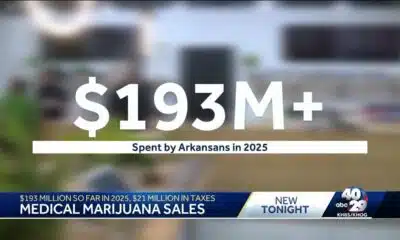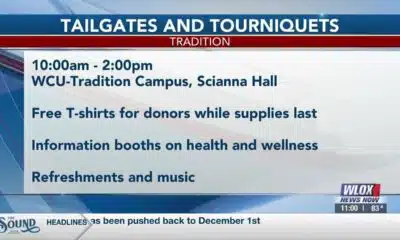The specific duties of elected officials vary considerably from one branch of government to the next and between the different levels of government. But one common responsibility shared by virtually all those in elected office is to balance the interests, values, and priorities of their constituents. This is no easy task, particularly for those in powerful, high-profile positions who represent hundreds of thousands if not millions of Americans.
Consider, for example, the U.S. president. Subject to the individual judgements of over 250 million voting-age Americans, most presidents in recent decades have had approval ratings below 50%. According to Gallup survey data, George H.W. Bush is the only president since the Kennedy assassination with an average approval rating above 60% – and even he was voted out of office after a single term. (Here is a look at the most – and least – effective presidents in U.S. history.)
Like the president, each of the 50 sitting U.S. governors has the role of a chief executive. And as the highest-ranking and highest-profile elected official in state government, governors are also subject to constant public scrutiny. And some appear to be doing a better job than others.
Based on 2023 survey data, Mississippi Gov. Tate Reeves has an approval rating of 48% and a disapproval rating of 42%. Based on these figures, Reeves ranks as the fourth least popular state governor in the country.
Reeves, a Republican, took office in 2020 and is currently serving his first term as governor.
All data in this story is from Morning Consult, a public opinion data research company. Governors were ranked by their approval rating. Ties were broken by disapproval ratings, and in the case when governors shared the same approval and disapproval rating, the governor with the largest survey sample size ranked higher.
| Rank | Governor | State | Approval rating (%) | Dissaproval rating (%) | In office since | Party |
|---|---|---|---|---|---|---|
| 1 | Phil Scott | Vermont | 78 | 14 | 2017 | Republican |
| 2 | Mark Gordon | Wyoming | 67 | 24 | 2019 | Republican |
| 3 | Chris Sununu | New Hampshire | 66 | 29 | 2017 | Republican |
| 4 | Jim Justice | West Virginia | 66 | 31 | 2017 | Republican |
| 5 | Andy Beshear | Kentucky | 63 | 32 | 2019 | Democratic |
| 6 | Josh Green | Hawaii | 62 | 22 | 2022 | Democratic |
| 7 | Sarah Huckabee Sanders | Arkansas | 61 | 27 | 2023 | Republican |
| 8 | Kay Ivey | Alabama | 61 | 33 | 2017 | Republican |
| 9 | Ned Lamont | Connecticut | 61 | 34 | 2019 | Democratic |
| 10 | Kristi Noem | South Dakota | 61 | 37 | 2019 | Republican |
| 11 | Brian Kemp | Georgia | 60 | 33 | 2019 | Republican |
| 12 | Brad Little | Idaho | 60 | 33 | 2019 | Republican |
| 13 | Bill Lee | Tennessee | 59 | 31 | 2019 | Republican |
| 14 | John Carney | Delaware | 58 | 31 | 2017 | Democratic |
| 15 | Greg Gianforte | Montana | 58 | 33 | 2021 | Republican |
| 16 | Laura Kelly | Kansas | 58 | 34 | 2019 | Democratic |
| 17 | Jared Polis | Colorado | 58 | 35 | 2019 | Democratic |
| 18 | Janet Mills | Maine | 57 | 40 | 2019 | Democratic |
| 19 | Doug Burgum | North Dakota | 56 | 26 | 2016 | Republican |
| 20 | Glenn Youngkin | Virginia | 56 | 32 | 2022 | Republican |
| 21 | Mike DeWine | Ohio | 56 | 37 | 2019 | Republican |
| 22 | Ron DeSantis | Florida | 56 | 38 | 2019 | Republican |
| 23 | Gavin Newsom | California | 56 | 38 | 2019 | Democratic |
| 24 | Gretchen Whitmer | Michigan | 56 | 40 | 2019 | Democratic |
| 25 | Wes Moore | Maryland | 55 | 16 | 2023 | Democratic |
| 26 | Maura Healey | Massachusetts | 55 | 21 | 2023 | Democratic |
| 27 | Kim Reynolds | Iowa | 55 | 39 | 2017 | Republican |
| 28 | Spencer Cox | Utah | 54 | 30 | 2021 | Republican |
| 29 | Henry McMaster | South Carolina | 54 | 36 | 2017 | Republican |
| 30 | Tim Walz | Minnesota | 54 | 41 | 2019 | Democratic |
| 31 | Josh Shapiro | Pennsylvania | 53 | 26 | 2023 | Democratic |
| 32 | Eric Holcomb | Indiana | 53 | 34 | 2017 | Republican |
| 33 | Mike Parson | Missouri | 53 | 34 | 2018 | Republican |
| 34 | Michael Dunleavy | Alaska | 53 | 35 | 2018 | Republican |
| 35 | Philip Murphy | New Jersey | 53 | 39 | 2018 | Democratic |
| 36 | Roy Cooper III | North Carolina | 52 | 37 | 2017 | Democratic |
| 37 | Gregory Abbott | Texas | 52 | 43 | 2015 | Republican |
| 38 | JB Pritzker | Illinois | 52 | 43 | 2019 | Democratic |
| 39 | Tony Evers | Wisconsin | 52 | 43 | 2019 | Democratic |
| 40 | Kathy Hochul | New York | 51 | 41 | 2021 | Democratic |
| 41 | John Bel Edwards | Louisiana | 51 | 41 | 2016 | Democratic |
| 42 | Kevin Stitt | Oklahoma | 51 | 42 | 2019 | Republican |
| 43 | Jay Inslee | Washington | 51 | 43 | 2013 | Democratic |
| 44 | Michelle Lujan Grisham | New Mexico | 51 | 43 | 2019 | Democratic |
| 45 | Dan McKee | Rhode Island | 50 | 37 | 2021 | Democratic |
| 46 | Joseph Lombardo | Nevada | 49 | 25 | 2023 | Republican |
| 47 | Tate Reeves | Mississippi | 48 | 42 | 2020 | Republican |
| 48 | Katie Hobbs | Arizona | 47 | 36 | 2023 | Democratic |
| 49 | Jim Pillen | Nebraska | 45 | 30 | 2023 | Republican |
| 50 | Tina Kotek | Oregon | 42 | 39 | 2023 | Democratic |













































